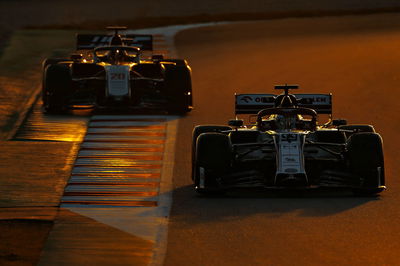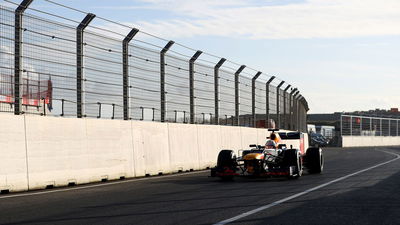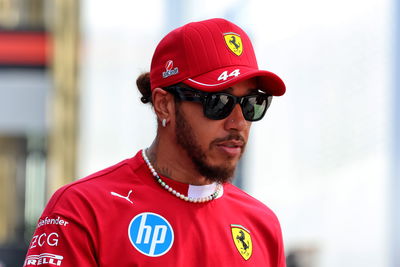Why F1 anticipates closer but not better racing in 2020
Fresh from Formula 1 pre-season testing, two trends were clear beyond the mirage and mystery of the pace and performance of each team. The grid will be closer than ever but it won’t necessarily mean better racing in 2020.
With F1’s rules and regulations remaining largely unchanged for the upcoming season, natural performance convergence between all teams is predicted as the grid all get closer and closer to the peak of possibilities within what’s legally permitted.
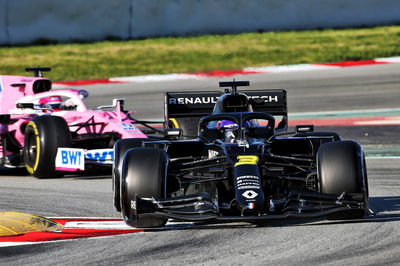
Fresh from Formula 1 pre-season testing, two trends were clear beyond the mirage and mystery of the pace and performance of each team. The grid will be closer than ever but it won’t necessarily mean better racing in 2020.
With F1’s rules and regulations remaining largely unchanged for the upcoming season, natural performance convergence between all teams is predicted as the grid all get closer and closer to the peak of possibilities within what’s legally permitted.
Fewer development areas can be mined for fresh gold, in terms of significant performance jumps, but it hasn’t stopped the top teams pushing the envelope in exciting new ways.
Mercedes debuted its DAS system, Red Bull caught the eye with rear suspension developments while Racing Point kicked up a fuss with its Mercedes 2019 ‘copy’ which appears to have propelled it up the pecking order.
But overall there is a sense the gap between the very top and very bottom is inching closer which intensifies the midfield and front-running fights.
“I think the gap has [closed] and that happens with continuous regulations and when you have stability the designs converge,” Red Bull team principal Christian Horner said. “Some of those converge closer than others.
“I think it is inevitable that the grid will consortia a little bit which is healthy for Formula 1. The most important thing for us is to converge that gap with Mercedes, that is our target as they are the absolute benchmark.”
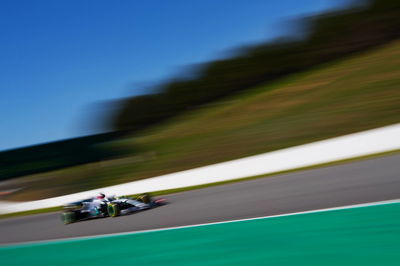
Predicting the precise order of the F1 teams from the pre-season testing pace duly became an even trickier task this year, with most drivers either staying wilfully ignorant or openly confused when quizzed by the media at Circuit de Barcelona-Catalunya.
Naturally, F1 teams and their complex data analysis will have a greater reading on its rivals, or what it perceives as the true picture heading into the 2020 season, with Mercedes adamant Ferrari has been hiding its pace and the Italian squad equally resolute it wasn’t concealing anything.
The F1 midfield battle, one of the hottest contests throughout 2019, looks set to be even tighter this year with any of the teams given a fair shout to the ‘best of the rest’ tag behind Mercedes, Ferrari and Red Bull – while some even put Racing Point in the battle at the front.
“I don’t know what the midfield is anymore, because there’s one pink car which is very fast,” McLaren’s Lando Norris said at the end of testing. “It’s difficult to know.
“The order will be shaken up and changed around a bit. I’m hoping it will be not as spread out between the top teams and us. I’m hoping it’s all a bit more bunched up.
“Mercedes still look extremely good, as usual, Red Bull look very good, Ferrari don’t look as amazing as they did last year, but you never know. Things can change. We need to keep our head down.”
Closer competition will always be welcomed in F1 by its very nature but the unintended consequence of the current generation of cars is likely to leave drivers, teams and fans frustrated at the stunted track action.
Numerous drivers complained about the handling of their respective F1 cars when following rivals on track in Spain during pre-season testing, to the point Daniel Ricciardo fears the problem could be the worst it has ever been despite the fastest-ever cars.
“It is pretty dirty, but I feel were going quicker than last year again,” Ricciardo said. “Turns 2 and 3 are easy flat, Turn 9 is for more or less every lap, not with fuel but low fuel.
“So the dirty air we are creating is more because of the speed were going, and trying to travel close behind another car you still feel it.
“Unfortunately, a track like this with a lot of high-speed corners in the first two sectors it is very hard to stay close to a car. I’d like to say it’s better but it is certainly not and maybe a bit worse.”
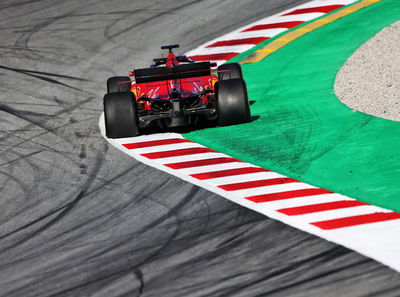
F1 bosses were always braced for this scenario ever since acknowledging the technical regulations needed an overhaul to stop the cars being so badly reliant on downforce and hurt by the impact the ‘dirty air’ has on the cars.
This is why Ross Brawn has been spearheading the 2021 rules with the primary goal of creating closer and more competitive racing. Even at the cost of slower cars and, as many teams anticipate, some very similar looking efforts across the grid.
It’s a dilemma F1 has previously been toiling with until an overall backing from teams came towards the end of last year. All 10 teams are now ramping up preparations for the new era of F1, with some already working on design concepts for 2021 before the 2020 season has even started, looking to grab any early advantage possible.
Charles Leclerc sees the rules transition as a compromise but one well worth having so the sport can balance the short-term negatives against the overall benefits.
“In a perfect world I would like this year’s car for qualifying [in 2021], and then hopefully next year’s car, if it’s better for racing, for the race,” Leclerc said. “But that’s of course not possible.
“On the a whole I think it’s going to be a good thing for the sport because we need more fighting. We need to be able to follow cars closer.
“So yes, maybe that means that for three, four, five years we’ll be slower than where we are at now, but I’m pretty sure with how quick the sport is evolving that we’ll find all the solutions to give all the performance to the cars.
“Hopefully in four or five years we’ll recover this deficit we’ve had for the first few years.”
Over the next two seasons F1 will face some very different challenges but also some very different positives through of Brawn’s 2021 vision.
Lap records are expected to be smashed throughout this year, some that could last for a long time, and while Saturday’s qualifying sessions will be incredibly close and mind-bogglingly fast the bigger payoff will arrive on Sundays in 2021.
“It’s great to do lap records, but to be honest, I prefer good racing.” Max Verstappen said. “Because the cars are amazing to drive, they are super-fast, and for sure we will break some lap records.
“But when you are following a car it’s just impossible. There is such a big downforce loss and of course every year the cars are getting faster so it’s just getting worse and worse and so definitely for next year I think the cars are not going to be enjoyable and easy to drive, but I just hope the racing will be better.”
2020 F1 is set to make history and provide plenty of promise to become an all-time classic season, with the big three teams showing world championship credentials plus an intensely competitive midfield group looking to pounce on any podium opportunities.
For now, F1’s excitement on Sunday is hoped for rather than expected. But for 2021, the situation could be flipped.
